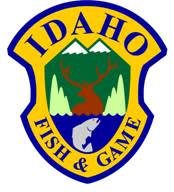Idaho F&G to Discuss Priest Lake Fishery Management
Idaho Department of Fish and Game 02.22.13

Idaho Fish and Game will host a meeting in Priest River on February 28 to share information and answer questions about the future management of the fishery in Priest Lake.
The meeting will be from 7 to 9 p.m. at the Priest River Senior Center, at 339 W Jackson.
In November, the Idaho Fish and Game Commission approved the 2013-2018 State Fisheries Management Plan. In addition to setting statewide policy direction for the fisheries program, the plan discusses management direction of regional waters, including Priest Lake.
Priest Lake recently has been the subject of lively discussion within the angling community. Lake trout, or mackinaw, have dominated the Priest Lake fishery since they overpopulated the lake in the 1980s, effectively collapsing the kokanee and bull trout populations. Though the lake trout fishery is popular with many anglers, many others have advocated restoration of a kokanee, bull trout and cutthroat fishery through a large-scale lake trout suppression effort similar to that on Pend Oreille.
When Fish and Game solicited public comments on issue in a series of public meetings and through a random mail survey, angler opinions were divided almost right down the middle.
Jim Fredericks, regional fishery manager, recognizes it’s a difficult issue. On one hand, because the lake trout are prolific, the fishery costs very little to manage and provides a unique opportunity for anglers in the area. The flip side is that lake trout tend to dominate systems at the expense of other species.
In terms of recreation and economics, lake trout don’t attract as many anglers as other fish. According to Fredericks, angler participation was two to three times greater back in the 1950s, when it was based on kokanee, cutthroat and bull trout, than it is today, despite much easier access and the increase in the human population in the past 50 years.
Further complicating matters, Fredericks says biologists don’t have a clear picture of how lake trout and kokanee populations in Priest Lake are interacting right now. The past two years have been marked by an increase in the kokanee population that has regenerated interest in the kokanee fishery.
While Fish and Game biologists have been pleased to see the rebound in kokanee, they caution anglers not to expect it to last. According to Fredericks, the experience in Idaho, surrounding states and Canada shows that when a lake becomes dominated by lake trout, it’s virtually impossible to restore a balanced predator-prey fishery.
Given the split public response coupled with questions about factors controlling the kokanee population, lake trout diet and growth, angler harvest rates, and potential funding, Fredericks says it would be premature to make a decision about the long-term management of Priest Lake right now.
As they gather new information in the coming years, Fredericks anticipates convening a diverse group of stakeholders to help guide development of a more informed, long-term management plan for Priest and Upper Priest lakes.
The management plan directs Fish and Game to use the next few years to gain a better understanding of how the fishery in Priest Lake is functioning. Prior to the next management planning cycle, that information will be used to guide a decision about the long-term management direction.

